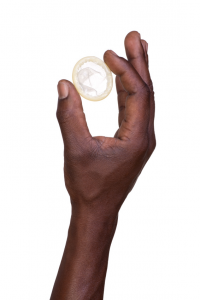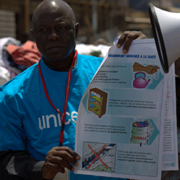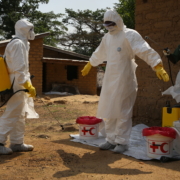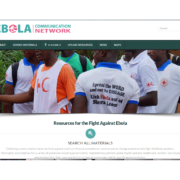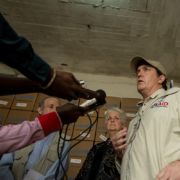Encouraging Condom Use or Abstinence for Ebola Survivors
Of all the searing images that have come from the Ebola epidemic, the ones that stay with me are the ones that show the loneliness of the disease. The child dying on the floor, the people standing behind yellow caution tape, the impenetrable barrier of the protective suit that prevents the sick from feeling the touch of a caring human hand. How do people endure this kind of isolation? And how must it feel to survive Ebola, to survive this loneliness, and then to face more isolation and loneliness when you return home?
Of course stigma is one cause of isolation for survivors, but another is becoming increasingly clear: sexual transmission of Ebola is real, and we must ask survivors to be very careful not to pass Ebola to a sex partner. They must use a condom or abstain from sex for weeks – both of which are options that put a barrier (however thin and beautifully packaged!) between a traumatized Ebola survivor and a welcome, needed act of intimacy and love.
So how do you communicate about protecting your lover (or yourself) from Ebola? There are a couple of pieces of good news here. First, we actually know quite a bit about communicating with people about sexual behavior, particularly about using condoms. Second, men can pass Ebola to their partners for seven weeks. This may seem like an eternity to a man recovering from the kind of isolation that Ebola wreaks, but the risk does end and life can go back to normal, unlike sexual behavior for someone with, say, HIV.
There are many successful HIV prevention programs that focus on changing sexual behavior in different ways to mitigate risk. Here is a link to some HIV/AIDS program examples, most of which address sexual behavior for different audiences.
These materials and strategies won’t work if just applied to Ebola in Sierra Leone, of course. This recent study from Sierra Leone on the mental health impact of Ebola (done by the International Medical Corps in the Port Loko District) gives some insight into the ways in which materials for survivors and their sexual partners might be best designed, even though the study is small. The main idea I took away was – again – the weight of loneliness, loss, grief, fear, stigma and isolation that sufferers and survivors bear. It would be unconscionable to inadvertently make that burden worse by producing materials that reinforce separation, rather than connection.
If I were designing materials for Ebola survivors about sexual transmission, what would I keep in mind? I think one overriding theme comes through, maybe best illustrated by the images on condom packages. Are they covered with serious health messages? No. We save that for cigarette packages. Instead they are covered with pictures and words that evoke the act of love, in all its human permutations, depending on the brand and its intended market. In other words, you can’t sell condoms with HIV or Ebola. You sell condoms with sex. Likewise, we won’t be able to “sell” condom use and abstinence for Ebola survivors with fear and trembling. You can’t make intimacy about fear – you have to make intimacy about love, even when love means abstaining from the act of it, if only for a time.


